
17 government inspectors, 170 companies and more than 9,000 potential infractions: inside B.C.’s oversight of the oil and gas sector
Notes made by regulator officers during thousands of inspections that were marked in compliance with...
This story is part of Going with the Flow, a series that dives into how restoring nature can help with B.C.’s water problems — and what’s stopping us from doing it.
The residents of B.C.’s Sunshine Coast have reluctantly become accustomed to drought — having experience stage 4 drought for five of the past eight years due to dwindling water supply.
But this year, for the first time, drought triggered the Sunshine Coast Regional District to declare a local state of emergency on Oct. 17, which meant banning non-essential commercial water use for businesses like breweries and cement facilities.
While rain is beginning to provide some relief, the drought crisis is not going away any time soon — it’s only getting worse as weather becomes more unpredictable. Many who live on the Sunshine Coast say the problem has been festering for years, and solutions have been proposed but not often pursued.
The district enacted Stage 4 water restrictions on Aug. 31, which halted all outdoor water use and barred farmers from using any water for irrigation. This has had a major impact on a region that is rich with small farms and residents who rely on home gardens as a key food source.
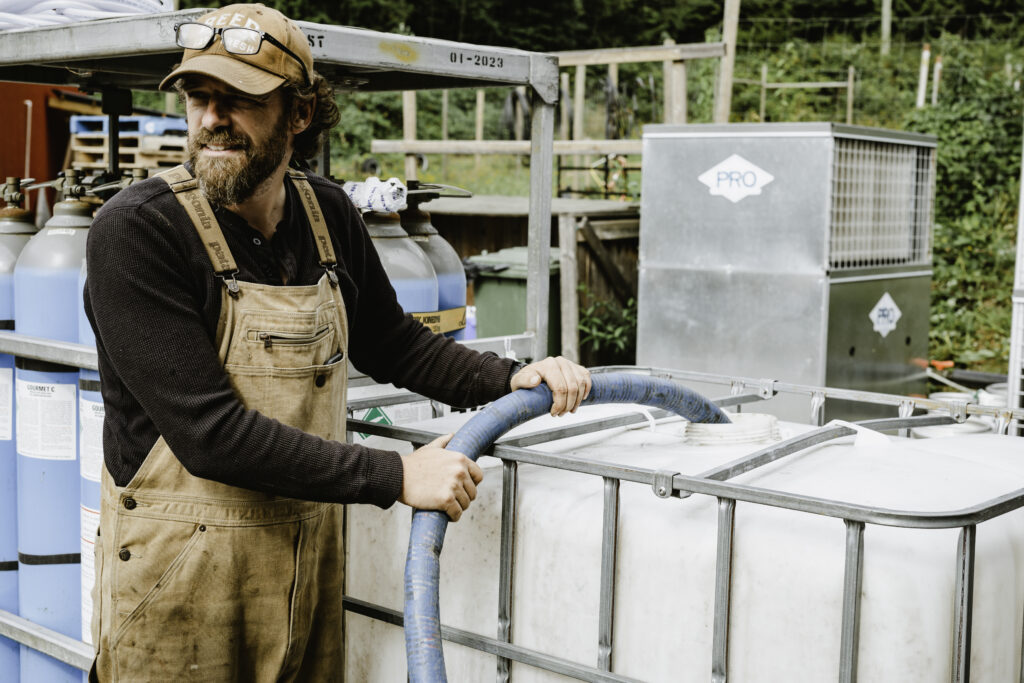
The Sunshine Coast is not alone. In just the first two days of October, 33 heat records were broken across B.C. People in ‘Raincouver,’ which usually sees 115 millimetres of rain in October, barely saw a drop this month as wildfire smoke lingered over the mountains.
But drought can’t only be understood in terms of lack of rain, Younes Alila, professor in the University of British Columbia’s department of forest resources management, told The Narwhal.
He said to address drought, people have to understand the complexity of hydrology behind them. The drought this year can be connected to the atmospheric river last fall, and wildfires and the two La Niña years in a row, he explained.
“There is no way to mitigate droughts in B.C. without a sound understanding of what controls droughts,” he said.
While this list is by no means exhaustive, these are some of the ways the Sunshine Coast and the province could have prepared for drought this year.
The province introduced the Water Sustainability Act in 2016 to “ensure a sustainable supply of fresh, clean water that meets the needs of B.C. residents today and in the future.”
But Aaron Hill, executive director of Watershed Watch Salmon Society, said the water management tools available under the act “have not been used much since the act came into force … and they have not been used at all during this current crisis.”
The act allows B.C. to declare a temporary significant water shortage, to issue an order to protect critical water flow and prevent “irreversible harm to the aquatic ecosystem,” and to issue an order to prevent diversion of water from a stream if the level has become so low it threatens a population of fish.
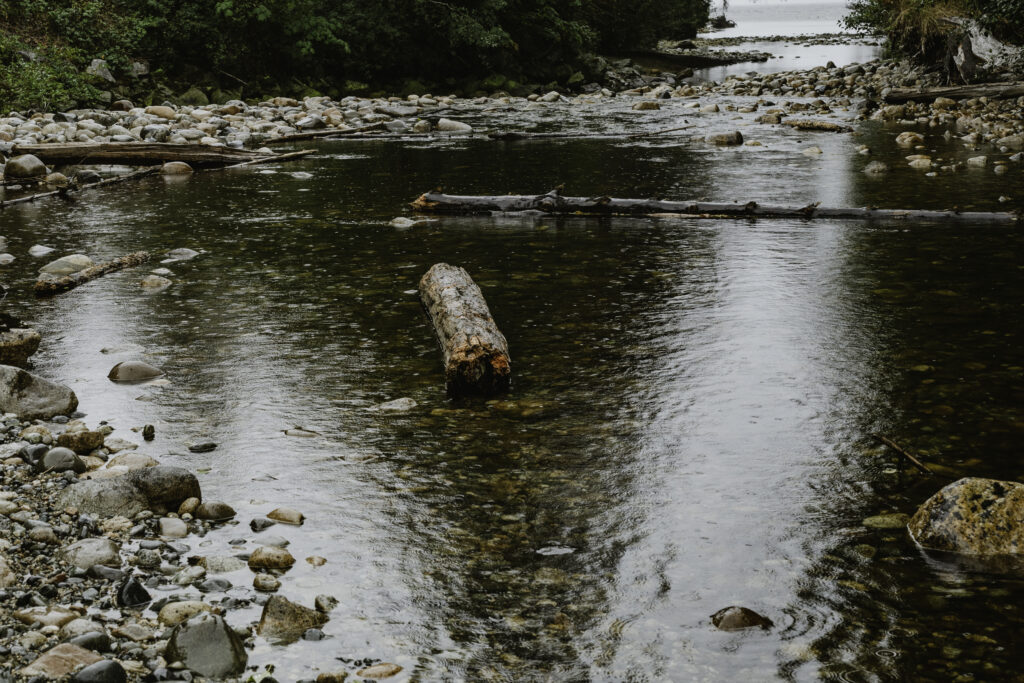
Water levels have certainly reached critical levels — thousands of salmon were found dead in Neekas Creek, shown in a video filmed in Heiltsuk territory. Watershed Watch also shared a video showing salmon-bearing Ford Creek in Chilliwack, B.C., to be extremely low, in stark juxtaposition to a golf course with sprinklers running behind it.
“I don’t think I’m alone in finding it very troubling that during this crippling drought, where creeks are drying up and salmon are dying for lack of water, that none of these tools have been used,” Hill said in an email to The Narwhal.
Last year, Oliver Brandes, co-director of the University of Victoria’s POLIS project on ecological governance, similarly criticized the province for not fully utilizing the sustainability act.
“Inadequate flows for fish are only getting worse in water-stressed parts of the province, big industrial users are permitted to extract water at virtually no cost and boil water advisories are far too frequent. Communities are feeling water insecure,” he said.
In a written statement, the Ministry of Forests told The Narwhal its drought response focuses first on voluntary response and then regulations “as needed,” but it needs data to support such actions — and so it’s been increasing hydrometric stations and data collection. The ministry added that it can regulate flows for some streams through control structures (like dams), but not all streams have these structures in place.
The province has used the water sustainability act this year — but not in the way Hill described. In order to address the short-term water needs for people on the Sunshine Coast, the province used the legislation to temporarily reduce its environmental flow requirement for Chapman Creek.
But more generally, the Ministry of Forests told The Narwhal that its staff has been “working with the licensees to ensure minimum environmental flows downstream of reservoirs are maintained.”
B.C.’s NDP government announced a watershed security fund two years ago, but it has not been implemented. In the spring, the province completed public engagement, with a draft watershed security strategy expected sometime this fall.
Hill did give the province credit for providing $57 million in funding for projects through the Healthy Watersheds Initiative and Indigenous Watersheds Initiative.
“Many of these were led by First Nations and have contributed to climate-proofing watersheds and improving local watershed governance to counteract the fecklessness of provincial and federal water managers,” he said.
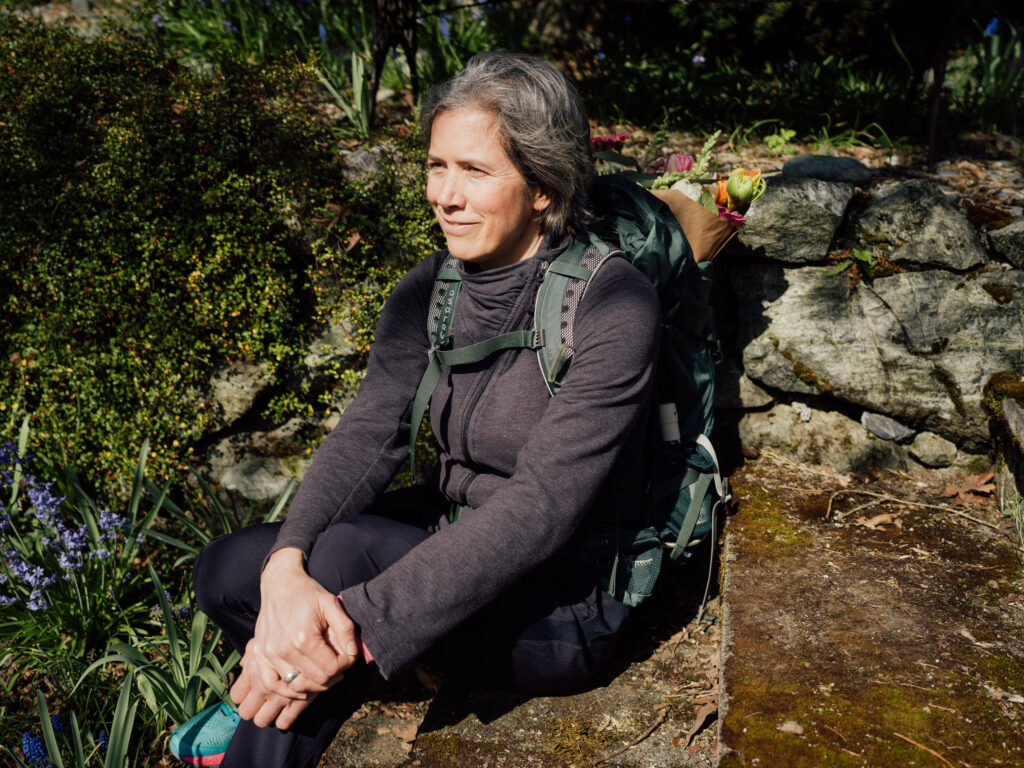
The province also intends to create water sustainability plans under the water sustainability act, but this is also slow-going. Years in, no plans have been created — but the work has begun in collaboration with Indigenous governments, Deborah Curran, executive director at the University of Victoria’s Environmental Law Centre, said in an interview. These plans are intended to empower more regional watershed governance. Curran said they will be critical in creating long-term plans with collaboration between multiple levels of government.
Curran said more holistic and effective watershed management is needed, including ‘water-centric’ planning that looks 100 years ahead. Water levels are no longer a certainty, she said — and so plans have to be made for how to react, including who will be allowed to use water and who will not, so people feel prepared as a drought approaches.
Speaking of water levels no longer being a certainty: introducing a ban on outdoor lawn watering in May every year is one way to prepare for unpredictable low water levels, Curran said. Some districts already have this rule in place, and the Sunshine Coast and other regions could join them.
Outdoor water use in summer is primarily used for ornamental flowers and lawns. It’s time to tweak the dominant culture and say goodbye, she said, noting it’s “low-hanging fruit” that could save up to 50 per cent of outdoor summer water use.
And speaking of cultural change…
Water is a human right, Curran said, but in the face of climate change, some people in society need a “reality check,” particularly heavy users.
She advocates for water users to pay for use, rather than a flat fee. She points out this could have tiered price ranges, keeping rates lower for families that use an average amount of water but higher for heavy users.
On average, Canadians use 235 litres of water per day according to 2015 Statistics Canada figures.
Installing water metres would also help find leaks, which can save a lot of water.
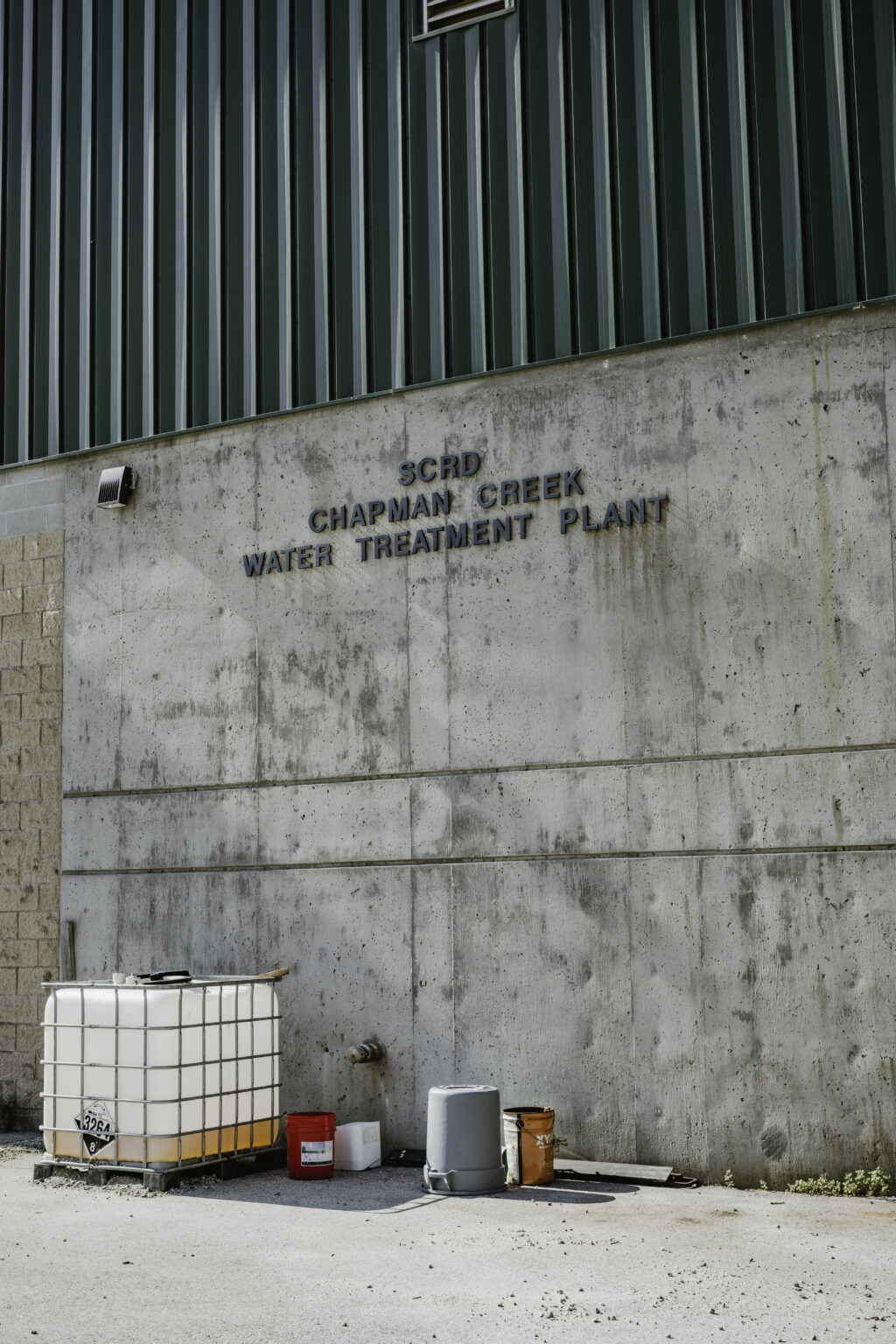
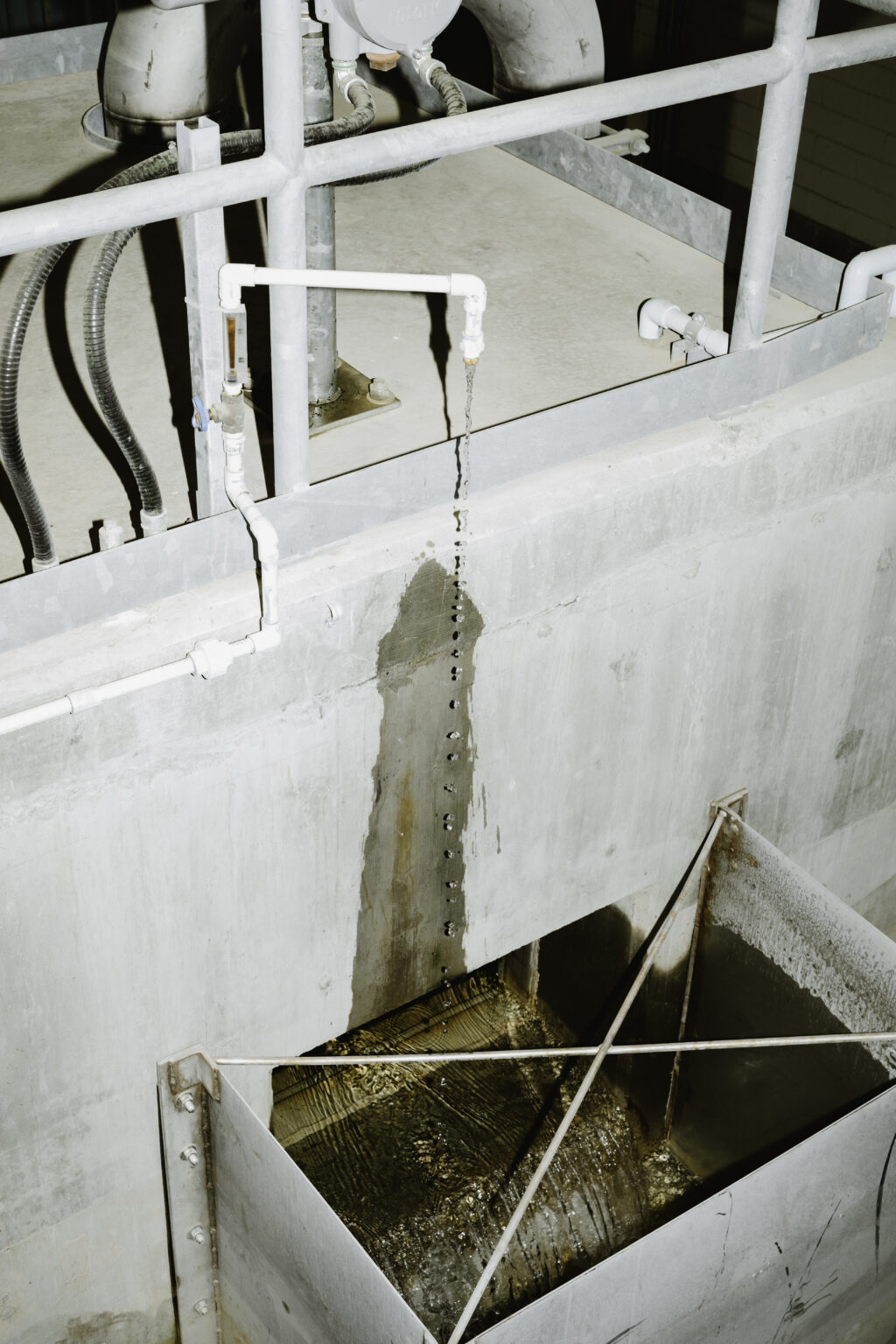
The Sunshine Coast Regional District has 6,200 water metres and a population of almost 30,000 people. The district received approval from electors last year to borrow up to $7.25 million to undertake a water metering installation project.
In a March 2022 report, the regional district said its water metering program is nearing completion, and it may review water rates in 2023 to help the transition to volume-based billing.
But a challenge that the community faces is that some people are willing to pay two or three times more as long as they can continue watering their lawns and gardens, according to Remko Rosenboom, Sunshine Coast Regional District general manager, infrastructure services.
“We have to incentivize water conservation for that section of our residents,” he said.
In one part of the Sunshine Coast, metering is already in effect: water use dropped by almost 55 per cent in Gibsons after the town began tracking usage while simultaneously increasing the price of water.
The town is now able to supply Upper Gibsons with water, which it could not do before. The aquifer has higher levels of water than it did in 2012 because while more people are being serviced, they are using less water. However, it has raised water bills for users like farmers.
Gibsons also extended its asset management plan to include natural assets like wetlands, rather than only engineered assets like water pipe infrastructure — recognizing nature as integral infrastructure.
Former Sunshine Coast Regional District chair Lori Pratt told The Narwhal last year that the province has caused many delays in making decisions on applications, including the Church Road well site, which is supposed to add up to five million litres of water per day to the Chapman water system.
“Water expansion projects take a lot of time as you wait for provincial approvals and testing and feasibility studies on wells and aquifers,” she said at the time, pointing out how an expansion application for Chapman Lake, which provides the community with water, was denied.
A spokesperson for the former Ministry of Forests, Lands and Natural Resource Operations and Rural Development told The Narwhal last year there is ongoing consultation about the Church Road site with the Sḵwx̱wú7mesh (Squamish) Nation and the Town of Gibsons has also submitted applications for the same groundwater source.
The Church Road well was due to come online this year, but the regional district said the project has been further delayed due to global supply chain issues.
“Resourcing needs to be addressed because that is really impacting everything,” Rosenboom said. The ministry is “so under resourced,” he added.

While a current spokesperson for the Ministry of Forests didn’t respond directly to concerns about their capacity, in their statement to The Narwhal, they said the ministry’s role “is to review the applications and set the terms and conditions.”
“It is the water purveyor’s responsibility to ensure they manage their water supply adequately.”
The ministry said that outside of this year’s drought, it has expedited water works applications for the Sunshine Coast area.
Curran said water licencing in B.C. is somewhat antiquated with the idea “whoever got here first gets it.” She said there needs to be new arrangements prepared for drought, rather than operating under the assumption water will be “available for everyone all the time.”
More consideration for the spiritual importance of water and public health is needed, and community and cultural values are not reflected in the licencing system, she said.
Patrick Connelly, co-founder of Sunday Cider in Gibsons, B.C., told The Narwhal locals often talk about how previous regional district boards failed to adequately build reservoirs and water infrastructure.
“I think the [Sunshine Coast Regional District] is working on it and understands the level of crisis, but there’s not a ton of action that has been taken that actually solves the problem,” Connelly said during the drought last year.
There appears to be growing momentum. In addition to pursuing universal water metering, in 2021 the Sunshine Coast Regional District explored new watershed protection programs and the possibility of creating a new regional district service for watershed protection — a project that was largely funded by the Healthy Watersheds Initiative.
The regional district also offers rebates of up to $1,000 for water users who install rainwater harvesting systems.
The regional district published a business case for a watershed protection service in March 2022. It laid out a series of next steps including ongoing dialogue with the shíshálh Nation and Sḵwx̱wú7mesh Úxwumixw, providing regular public updates on progress, and developing annual budget proposals based on planned water-related activities beginning with the 2023 budget. It also lists the intention to work more collaboratively with other governing authorities.
“The thing that’s missing is funding support for smaller local governments,” Rosenboom said, adding that many issues need to be weighed when making these decisions.
“What is the financial sustainability of us wanting to move all these projects forward at the same time, because we don’t think the community might be able to absorb it financially,” he asked.
Managing water means working across different jurisdictions of the province, First Nations, municipalities and private landowners. Right now, that’s not exactly happening.
Gibsons Mayor Bill Beamish told The Narwhal last year complaints about contamination are not passed onto the town from the province.
“The ministry comes in and investigates and files a report on a public website. There’s no sharing of that information with the town or the [regional district],” Beamish said.
“When you have an investigation of a contaminated site within our watershed, which affects our drinking water, we would like to be informed.”
Gibsons, which is working with the regional district and shishalh and Squamish nations, wants the province to support a regional watershed governance model.
“Science is clear on this: we have lost our best natural protection – the forest cover — against flooding, landslides, and droughts,” Alila from the University of British Columbia said.
Forest canopy shade keeps snow for longer, which melts slower and infiltrates the soil and replenishes groundwater reservoirs, he explained. This feeds channels during the driest parts of the year.
Without the canopy snow melts faster and is quickly delivered “out to the ocean.”
Logging roads also cause runoff to be drained into ditches, which then run into streams. While this is done to prevent landslides — which logging also increases the likelihood of — it means runoff that normally saturates the soil is drained out of the watershed, Alila said.
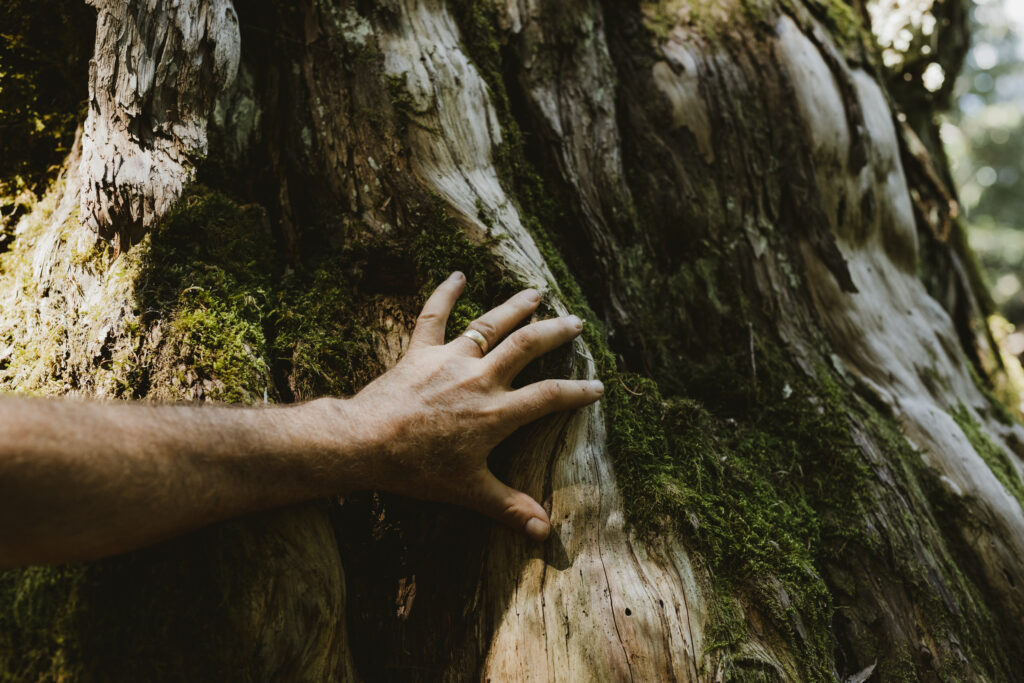
He also said second-growth trees, planted after logging older trees, consume as much as 50 per cent more water than older forests.
“The ways we have been managing the forests for a century and counting, especially more so over the last several decades, do not portray a government or an industry that appreciates the role of forests in mitigating against natural calamities such as floods, landslides and droughts,” he said.
He advocated for single tree selection, strip cutting, and smaller patch cutting rather than clear-cutting.
Alila explained that with two back-to-back La Niña years, which are wetter and cooler in the fall and winter, that means snowpack melts later and quicker — once again, not giving snowmelt a chance to infiltrate the soil. Combined with the atmospheric river, which wiped out snow at high altitudes, this meant even more melted slow was a “lost opportunity” to recharge groundwater.
As well, hot summers cause wildfires, which leads to dry, burnt soil that is not very good at absorbing rain and snow.
While there are many things happening at once, he said there is “no excuse for not being better prepared for this year’s drought.” All of the conditions that he laid out were known, he argued. As well, the impact of logging on soil has been demonstrated.
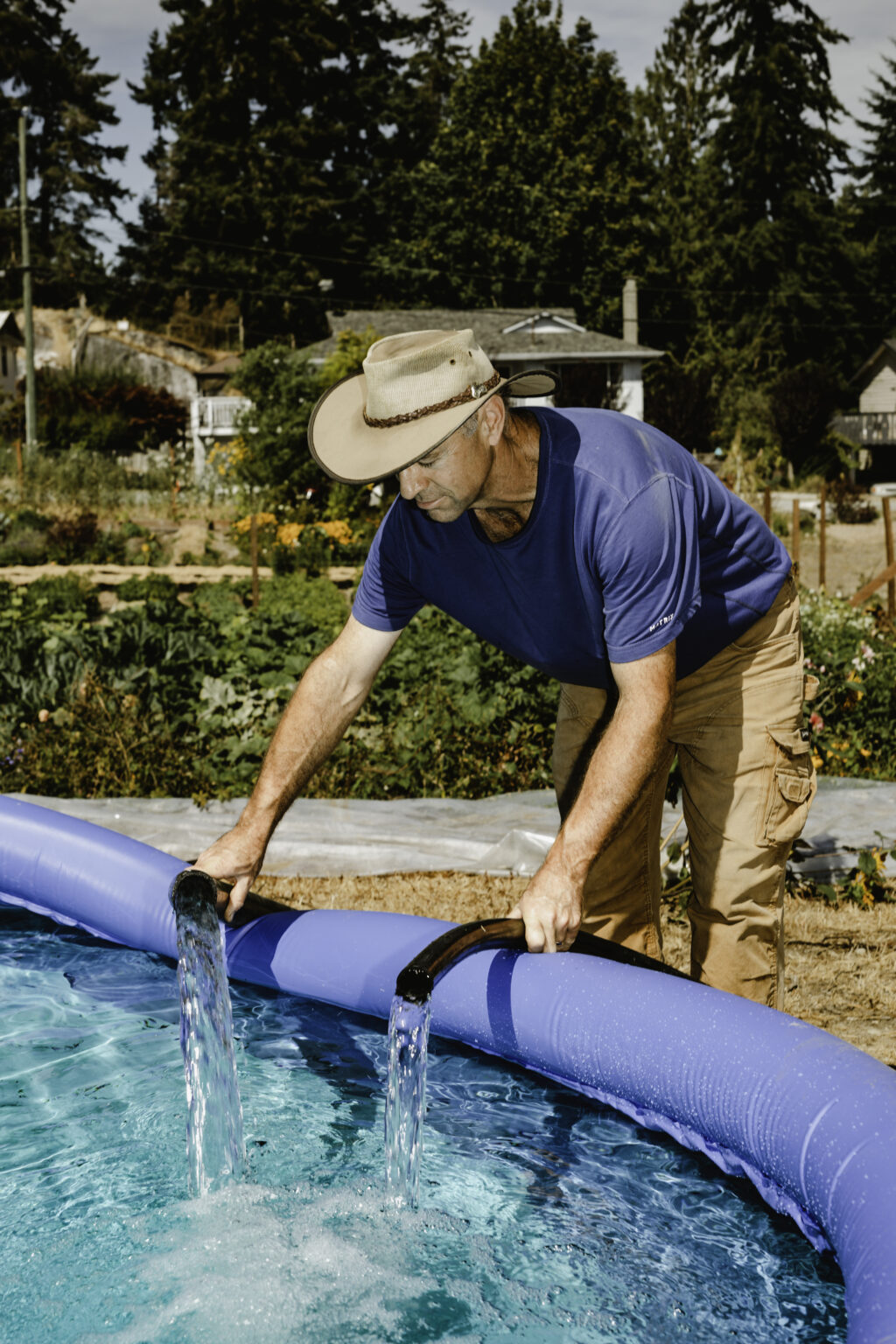
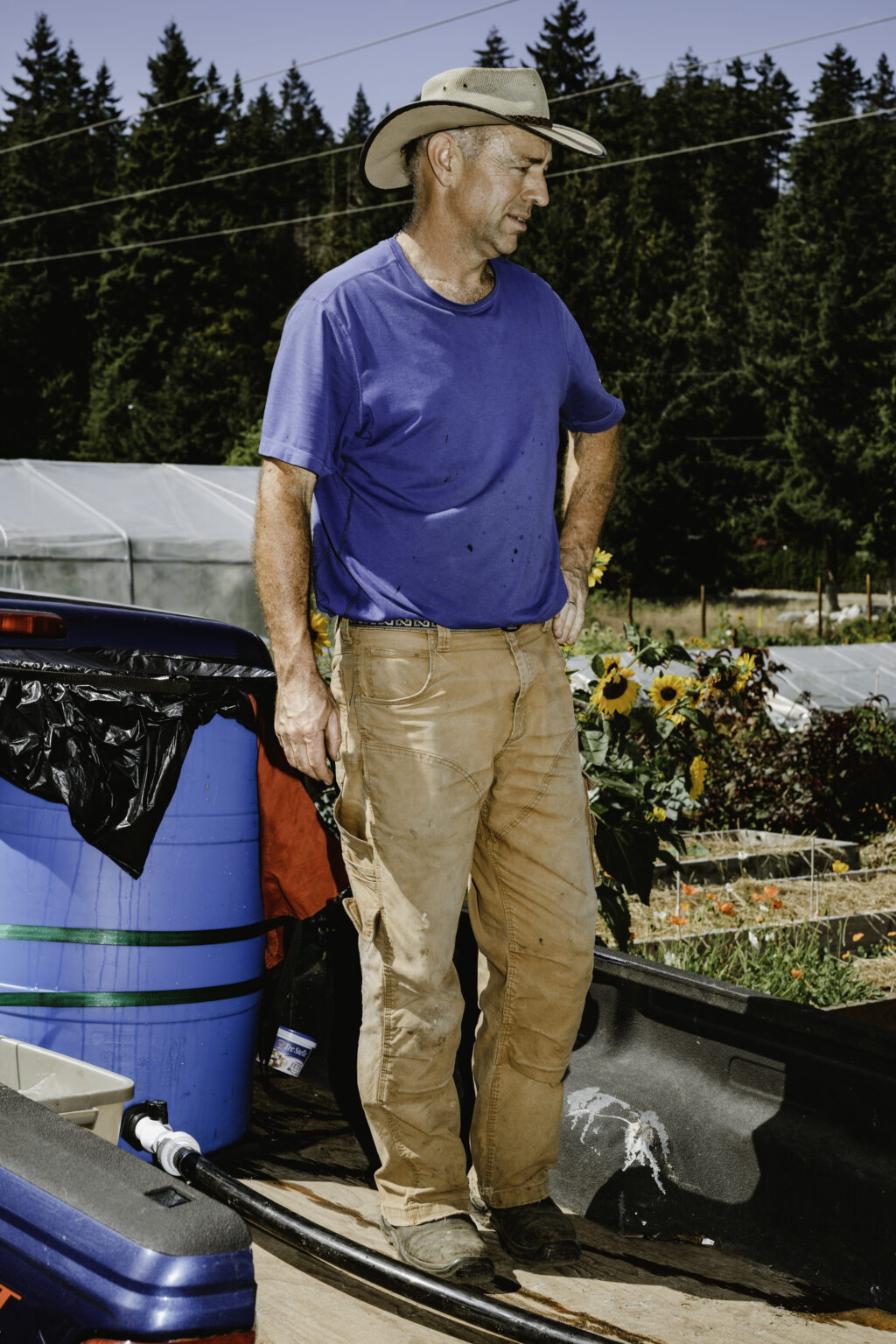
“Didn’t we know that we lost so much snow from mid to high elevation during the November 2021 flood event? We do – there is data that demonstrates this. Don’t we know that global warming is causing more rain and less snow as time progresses? We do – this is very well-established science,” he said.
“It is clear government agencies at all levels are not using the rather well-established science to better manage water during the driest periods of the year.”
We know, end with the easy one, right? But for Connelly of Sunday Cider, every local response to the drought has to be grounded in pursuing climate resiliency.
“This is climate change staring us in the face,” he told The Narwhal over the phone. He has options available to conserve water to keep his business running, but some are just “band-aid solutions” and larger action is needed, he said. He also said things are a little easier for him than some other businesses — cider uses less water than beer or wine and apple trees are quite hardy.
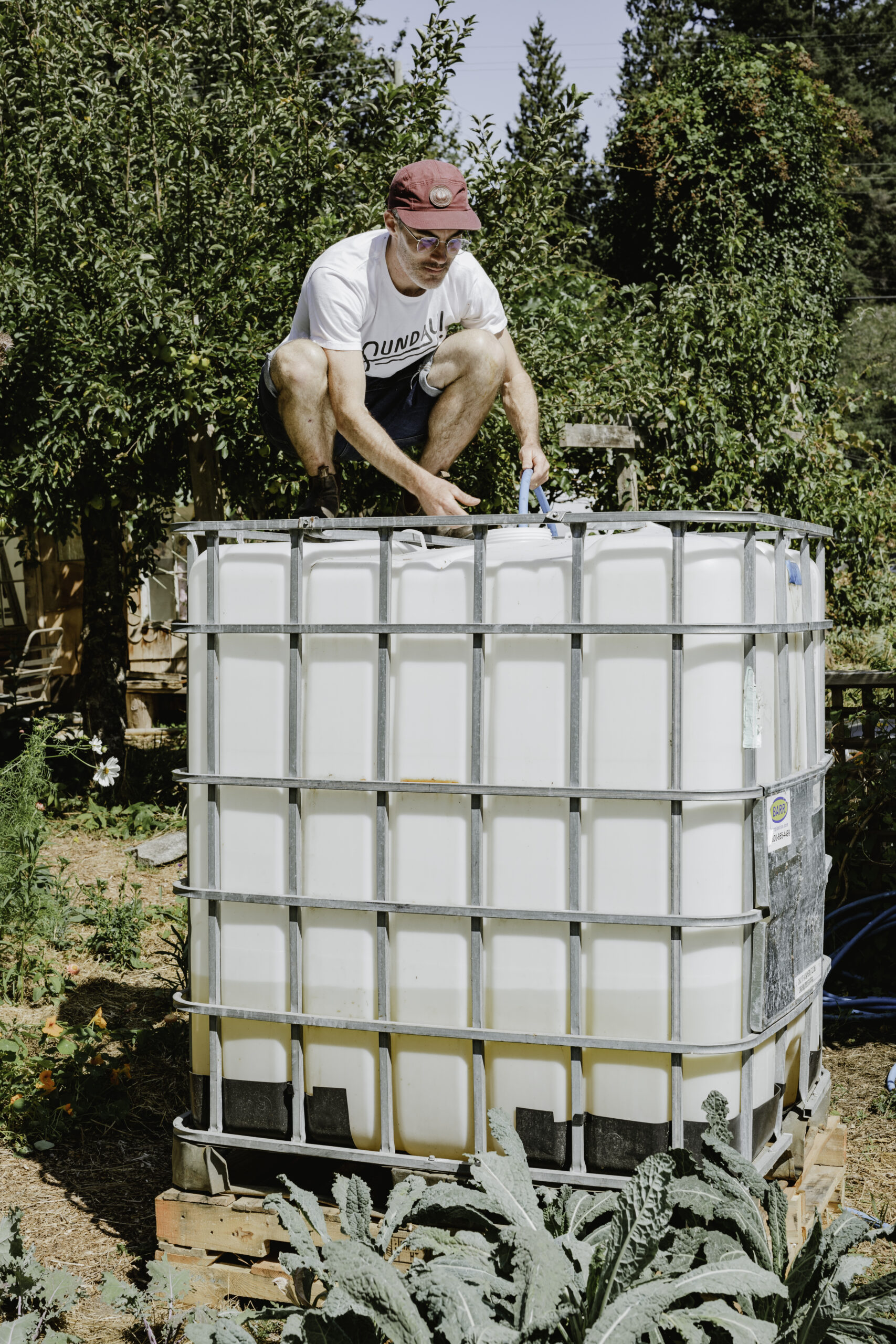
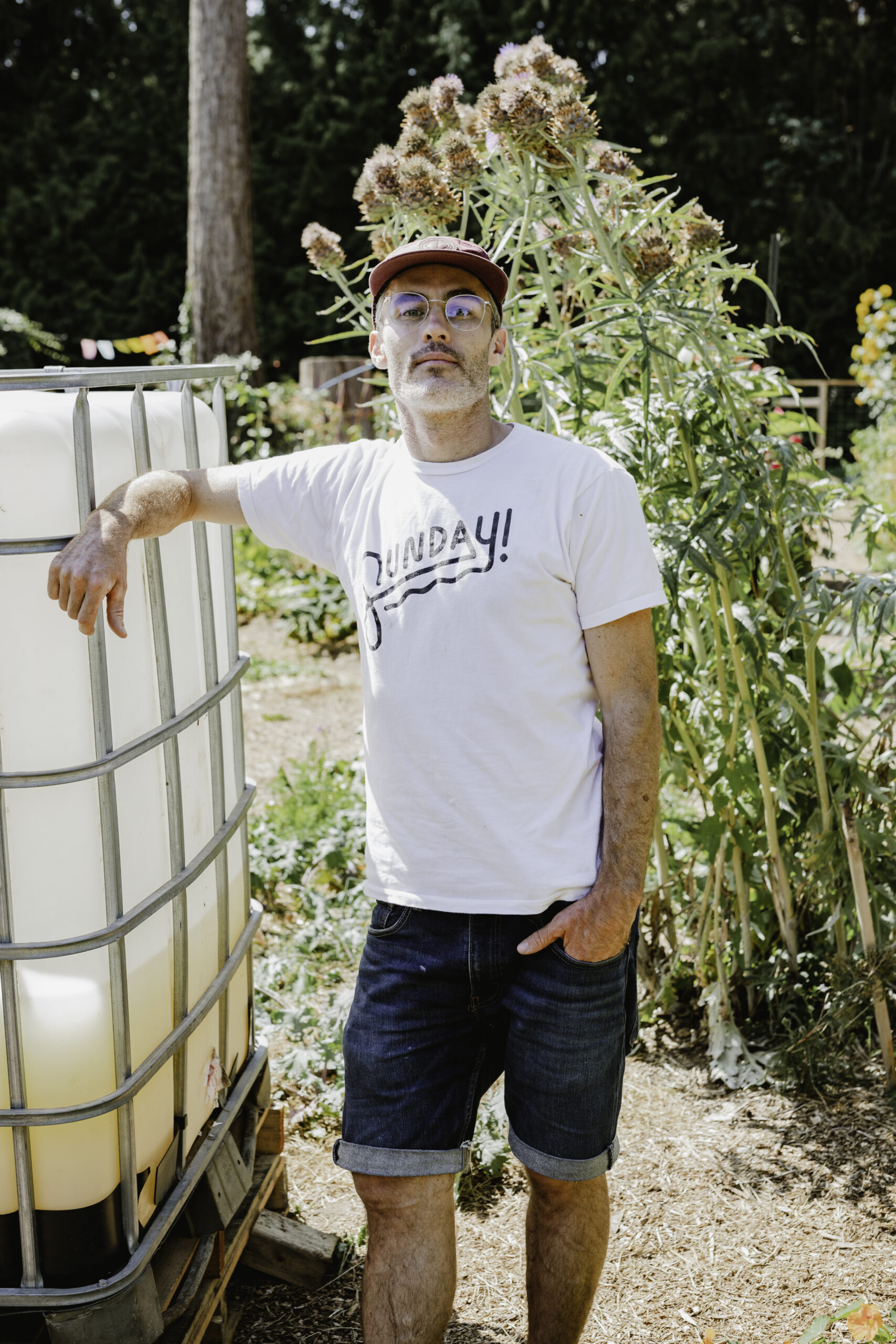
The province has a target to reduce greenhouse gas emissions to 40 per cent below 2007 levels by 2030. But for years, British Columbia’s emissions have been rising. In 2020, net emissions showed a dip at 63.5 million tonnes of carbon dioxide, which is 3 per cent lower from 2007 levels. But Jens Wieting, senior forest and climate campaigner for Sierra Club BC, suspects this is because many countries experienced temporary reductions in emissions due to the onset of COVID-19.
Sierra Club BC, represented by Ecojustice lawyers, was in the B.C. Supreme Court on Oct. 4 suing the B.C. government for failing to report on whether its climate plans will achieve key greenhouse gas emissions targets.
“In B.C., we have to stop acting with one hand to reduce emissions and with the other, increase emissions by allowing and subsidizing new fossil fuel development,” Wieting said, pointing to the LNG Canada terminal expected to be complete in 2025 as an example. He also wants to see more investment in habitat restoration and supporting Indigenous governance.
For Connelly, climate resiliency is connected to building a “food sovereign” community, specifically subsidizing and supporting food farmers. He doesn’t want the Sunshine Coast to rely on shipments — he points to how catastrophic flooding in B.C. last year halted the delivery of basic necessities like food.
“Climate is coming for your booze now,” he joked wryly.
“This is climate change, this is real, we need to do something. So let’s invest in solutions.”
Updated on Oct. 25, 2022 at 10:42 a.m. PT: This story was updated to include information from a statement provided by the B.C. Ministry of Forests following publication.
Updated on Oct. 28, 2022 at 2:23 p.m. PT: A previous version of this story stated that second-growth trees, planted after logging older trees, consume as much as 50 per cent more soil than older forests. In fact, it’s 50 per cent more water, not soil, and the story has been corrected to reflect this.
Updated on Nov. 1, 2022 at 8:00 p.m. PT: A previous version of this story stated the Sunshine Coast Regional District had declared a local state of emergency for five of the past eight years due to drought. In fact, it experienced stage 4 drought for five of the past eight years, but only declared a local state of emergency in 2022.
Get the inside scoop on The Narwhal’s environment and climate reporting by signing up for our free newsletter. On March 17, federal Conservative Leader Pierre Poilievre...
Continue reading
Notes made by regulator officers during thousands of inspections that were marked in compliance with...

Racing against time, dwindling habitat and warming waters, scientists are trying to give this little-known...

From investigative reporting to stunning photography, we’ve been recognized with four 2024 CAJ Awards nods...
